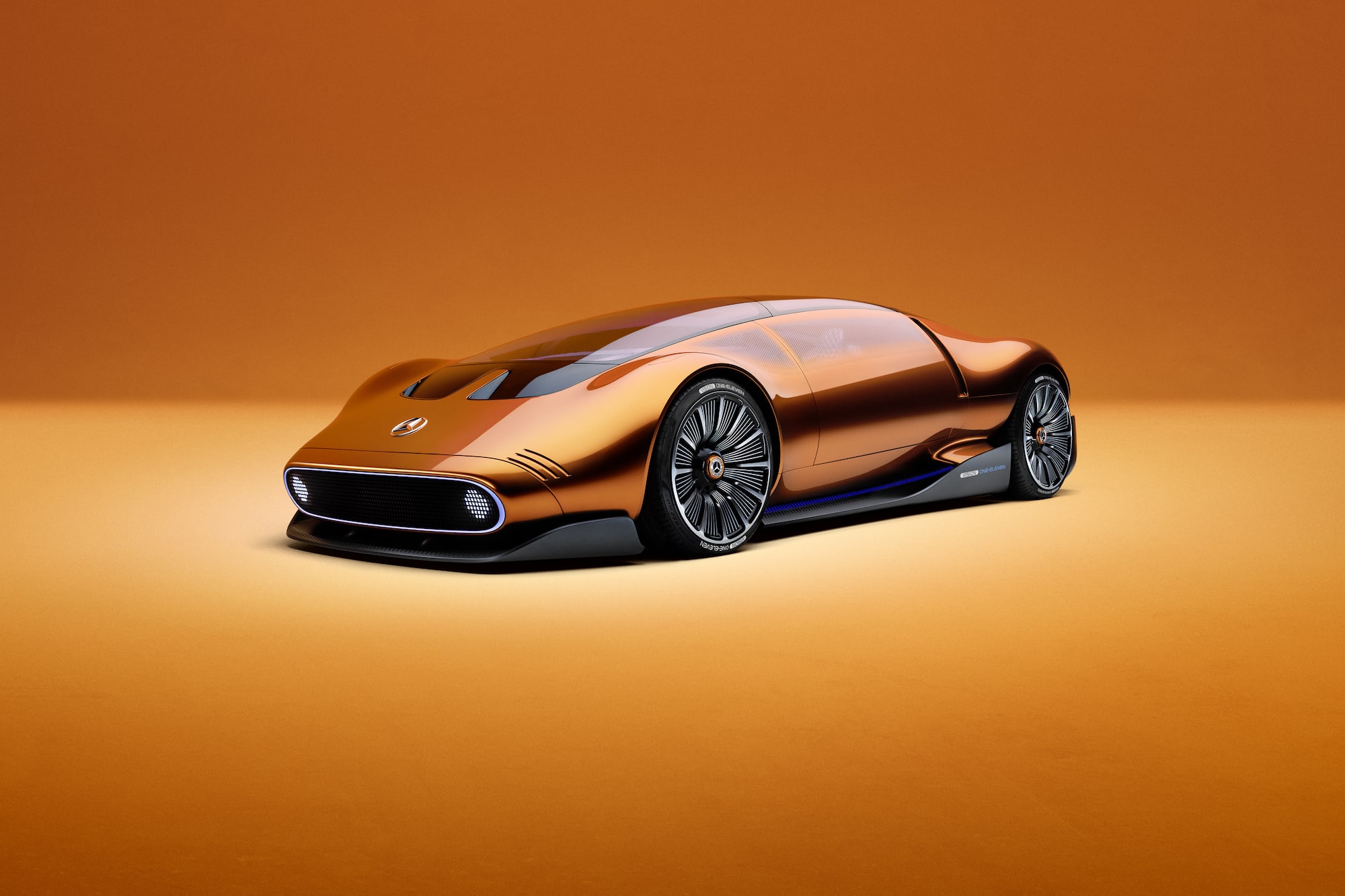Mercedes Vision One-Eleven The Wheel of Fortune?

Reinterpretation of the legendary C111, an icon of the 1970s, this study combines bold style with technological pragmatism.
It is always important to distinguish between craftsmanship and self-promotion. The second concept, for a manufacturer, often fails to an eye-catching concept car. And when you add a touch of historical wink to this approach, then the effect is devastating.

With its Vision One-Eleven study (1-11 in French), referencing the legendary C111 of the 1970s, Mercedes ticks all the boxes. But it also revives a pain point — the fact that it never dared to commercialize what would become an icon over the decades. The reason? The C111 was then disruptive with its diesel engine “borrowed from a heavy truck.” Its unpopularity at the time, barely softened by its ultra-aerodynamic design, is now praised.
Looking back, it must be acknowledged that this frugal mechanical was visionary amid the oil crisis. In 1976, with its 3.0-liter turbo diesel five-cylinder producing 190 hp, the German was able to reach 250 km/h effortlessly thanks to its very low aerodynamic drag.

In 2023, the Vision One-Eleven preserves this legacy of innovation encapsulated in a five-star design. Because beyond its lines of infinite purity, it is the core underneath that holds all the interest. Specifically, a completely new electric drivetrain developed jointly with the F1 engine department in Brixworth, England.
This is not just a marketing stance but a real technology transfer. The battery showcases a new chemistry and liquid cooling of its cell cylinders. The energy is then directed to two motors whose axial flow — unlike the radial flow used in 99% of the electric cars today — allows for unprecedented weight and size savings.
Think of a very thin large disk compared to current blocks, which are more like long wide trunks. The axial motor is 70% lighter and less bulky… to the point that it can fit directly into a wheel rim. A priority that frees up enormous space within the chassis. Thus, at equal weight, a car equipped with this technology can carry more batteries… and thus increase range. The wheel of progress keeps turning.
READ ALSO: What if Tesla had reached the end of its disruptive concept?
This page is translated from the original post "Mercedes Vision One-Eleven La roue de la fortune ?" in French.
We also suggestthese articles:
Also read





